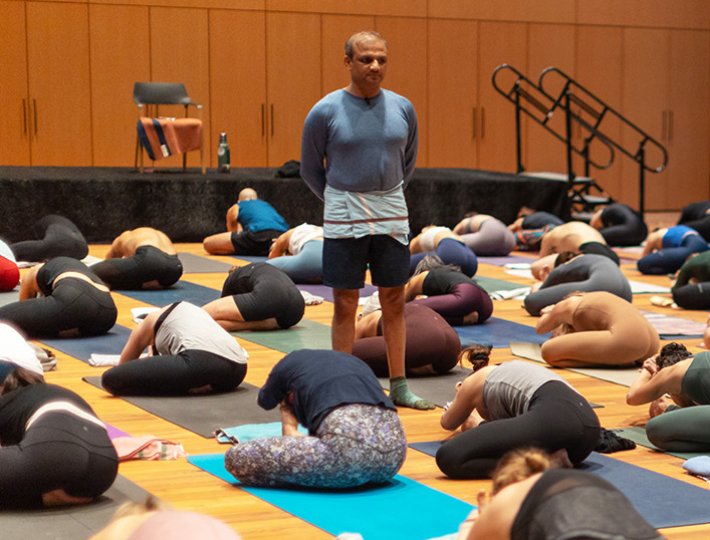When my partner talks, I’m listening. Unfortunately, it’s often to the voices in my head: “Are we really out of olive oil?” “Why does he seem annoyed—what did I do?” “I wish he’d stop talking so I can tell him about that thing.”
We all do this, a lot. In fairness to us, the voices in our heads are fairly loud. It’s often said that instead of listening many of us are just waiting to speak. It’s very human, but not the best formula for the intimate connection and emotional satisfaction that true listening can create. Couples therapists know this well. In the book Getting the Love You Want, Harville Hendrix, Ph.D., and Helen LaKelly Hunt, Ph.D., outline a method of conscious communication designed to help couples listen, and be heard, more deeply in order to foster a more supportive and satisfying relationship over time.
The “Imago Dialogue,” as they call it, is a series of steps to facilitate true listening and productive couples communication—it’s part of their larger Imago Therapy approach. An imago is defined as an idealized mental image of another person or the self, or as Hendrix has said, “What you’re looking for in a partner but aren’t aware of.” It’s the unconscious attraction to partners who remind us of our childhood caretakers, so we can replay and, eventually, heal old wounds. “It’s a tool that allows people to fathom a way to be present to someone else,” says Margo Steinfeld, LCSW, a Brooklyn, New York-based, certified Imago Relationship Therapist for couples and individuals. “It’s a means to make an emotional connection.”
When my now-husband, Brad, and I had been dating for only four months, we took a workshop with Hendrix and Hunt—I was covering a conference that gained us free access. (And he was into it—major points for him! And that didn’t freak me out—a great sign for me!) The dialogue is without a doubt one of the core reasons we’re still together and going strong. Here’s a paraphrasing of how it goes, though I encourage you to check out the whole thing.
Talk and listen. Two people take turns talking and listening. When you speak, try to connect with your vulnerable, true self. “On the other side of listening is the willingness to be honest and open and express oneself,” says Steinfeld. “They work as a team.” Try using “I” statements, stick to one topic, and avoid blanket statements (“You always…”). And don’t blame. When you listen, keep your lips sealed. No questions, no loud “uh-huhs.” Maintain soft, unforced eye contact. Your job here is to stay present in your body, heart, and ears.
Mirror and summarize. When the speaker is done, tell her what you’ve heard: “What I heard you say is….” Doesn’t have to be verbatim, but don’t embellish or editorialize with your tone. Be kind and respectful even if the content is upsetting you big-time. Make sure you’re getting it right: “Did I get that?” Redo it if not. Then ask if there’s more. If so, repeat. Once you get the hang of it, mirroring can go profoundly deep: “It’s in the presence of the mother that a newborn feels and knows that she exists,” says Steinfeld. “Conscious listening allows a person to know they exist.”
Validate. This isn’t about agreeing but rather acknowledging the validity of the other person’s perspective—it’s real to him, even if you think it’s cuckoo-brains. As in, “When I yelled from the other room, you felt like I was annoyed with you. That makes sense to me.” This is NOT the moment to add, “But I just couldn’t hear you over the fan! Why can’t you accept that?!” This is about validating the person you love. Steinfeld quotes another therapist who compares this way of communicating to international travel: “You’re in your country and your partner is in his country—you have to leave yours to visit him in his.”
Empathize. Now you’re acknowledging the other person’s feelings. Put yourself in her shoes and feel her being yelled at, unprovoked: “I can imagine how that was painful for you, feeling like I was mad for no reason.” And if you know more, maybe gently add something like: “…especially since you had such a chaotic family growing up, with your dad screaming all the time.”
Close. Listener thanks the speaker for sharing; speaker thanks the listener for hearing. You can take turns right away or at another time, whatever feels right for you both. After Brad and I did this process a bunch of times, we began to do it more automatically—a little awkwardly at first, then more naturally. When we’d run into a conflict, we’d reflect the other person’s perspective before jumping in with our own, which is pretty much the key to world peace. For example:
ME (scared and angry, but calm-ish sounding): “I’m feeling hurt that you’re checking your phone so often on our date. I’m interpreting that as you not wanting to be here.”
HIM (angry, but calm-ish sounding): “Looking at my phone is upsetting you because you feel like I don’t want to be with you.”
ME (relieved): “Yes!”
And miracle of miracles, instead of escalating into a great big fight, we ended up having a much softer, deeper conversation. I could hear about his relentless boss texting at all hours without feeling dissed. Then he felt heard rather than blamed, opening the space to check his phone slightly less and for me to be slightly less annoyed by it. Victory! And it created a way to eventually settle in deeper with one another. “Conscious listening equals a healthy relationship. You can’t have one without the other,” says Steinfeld. “It’s a mirror for each person to feel like they make sense, like they’re not alone, like the other person has their back.”
Brad and I continue to work on being present (I still sometimes want him to shush so I can ask what happened to the olive oil). It’s a practice, which perhaps one day will become a habit. In the meantime, we journey together from country to country, learning as much as possible along the way.









Comments (0)